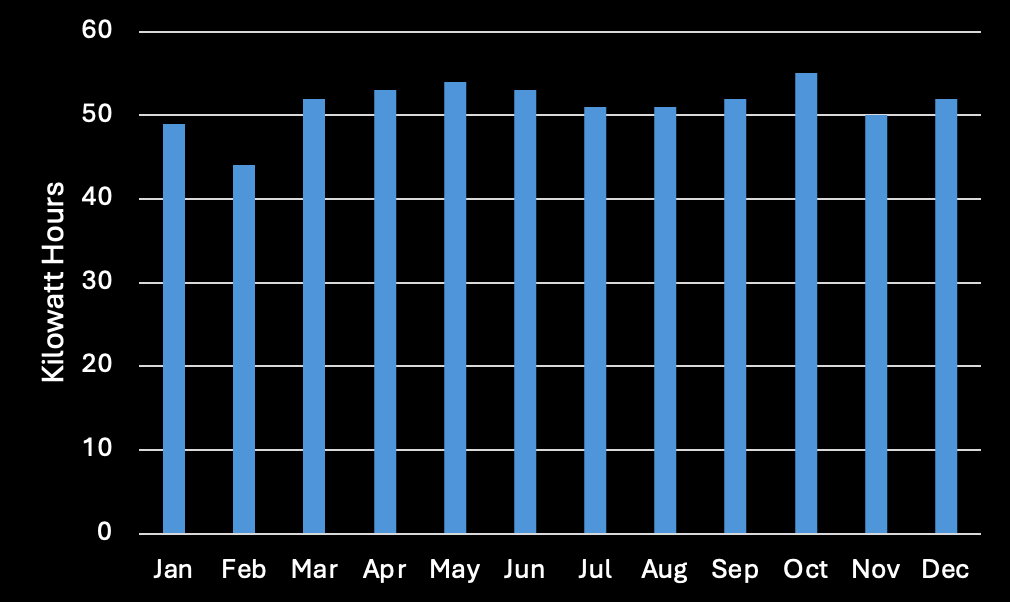How Much Electricity does a Refrigerator Use?
The Energy Consumption and Operating Costs of a Typical U.S. Refrigerator

Refrigerators are tirelessly working around the clock to keep your food fresh and beverages cool. Given their constant operation, they are among one of the larger contributors to household energy consumption (in my house, my fridge is about 5% of my total electricity usage). Understanding how much energy a typical refrigerator uses, the maximum current it draws, its operational costs, and the factors influencing these costs can help you make energy-efficient choices.
Energy Consumption of a Typical U.S. Refrigerator
Modern refrigerators are more energy-efficient than their older counterparts, thanks to advancements in technology and stricter energy standards. On average, a standard 18-20 cubic foot refrigerator, common in many U.S. homes, consumes between 300 to 800 kilowatt-hours (kWh) of electricity annually. Energy Star-rated models tend to be on the lower end of this range, using as little as 250 kWh/year. My own fridge, which is on the larger size, averages about 50 kWh/mo – or 600 kWh/year.

In contrast, older refrigerators—those manufactured before the mid-1990s—used upwards of 1,000 kWh/year or more. This big difference highlights the benefits of upgrading to newer, more efficient models when possible; you can save 50% or more!
Maximum Current Draw
The maximum current, or amperage, a refrigerator uses depends on its size, design, and features. A standard household refrigerator draws between 3 to 6 amps during regular operation. However, the compressors and defrost heaters will cycle on and off to keep the temperature constant, as shown in the graph below; the spike around 10 am is likely the freezer defrost cycle. During the compressor start-up phase, the current can spike to around 10 to 15 amps momentarily. This surge, known as the "inrush current," is brief but important to consider.

Refrigerators in the U.S. operate on 120-volt circuits, and it's common practice to allocate a dedicated circuit rated at 15 to 20 amps to accommodate this occasional surge without tripping breakers.
Cost of Operating a Refrigerator
To estimate the annual cost of running a refrigerator, you can use the following formula:
Annual Cost = (Annual kWh Usage) × (Cost per kWh)
Assuming an average electricity rate of $0.16 per kWh (though this can vary by region - in California it’s as high as $0.60 during summer peak hours!), here’s some examples:
- A typical fridge using 400 kWh/year at $0.16/kWh = $64/year
- My fridge using 600 kWh/year at $0.35/kWh = $210/year
Thus, upgrading to a new energy-efficient model can save over $100 per year, which adds up over the appliance’s lifespan.
Primary Factors Driving Cost of Operation
Several factors influence how much it costs to operate a refrigerator:
Key Factors That Affect Refrigerator Operating Costs
- Age of the Appliance
Older refrigerators (10+ years) are up to 50% less efficient than modern ENERGY STAR units. Replacing an aging fridge can cut operating costs in half. - Size and Configuration
Larger refrigerators consume more energy, as do models with through-the-door ice and water dispensers. - Energy Efficiency Rating
ENERGY STAR models meet strict efficiency guidelines set by the EPA. Look for the yellow EnergyGuide label to compare estimated annual energy use before buying. - Ambient Temperature
Refrigerators in hot environments (e.g., garages) work harder to maintain internal temperatures, increasing energy use. - Door Usage and Seal Quality Frequently opening the door, or having worn-out gaskets, allows cold air to escape and warm air to enter—making the compressor run more.
- Temperature Settings
Overly cold settings can waste energy. Recommended temps: Fridge: 37–40°F, Freezer: 0°F. - Maintenance
Dirty condenser coils can reduce efficiency. Clean them every 6–12 months to ensure optimal operation.
Conclusion
Understanding your refrigerator’s energy consumption and operational costs can lead to smarter energy usage and significant savings. Regular maintenance, mindful usage habits, and investing in energy-efficient models are key strategies for reducing both environmental impact and household energy bills.
